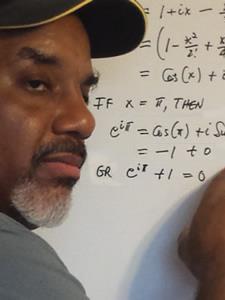
John K. answered • 10/06/14
Tutor
4.7
(18)
Effective Specialist in Never-Been-Good-at-Math situations
Since a > b > 0, in the interval [0, infinity), the graph of e−bx will always be above the graph of e−ax. So the set-up of the area integral is ∫(e−bx − e−ax)dx from 0 to ∞. This can be rewritten as the difference of two integrals:
(∫e−bxdx from 0 to ∞) − (∫e−axdx from 0 to ∞).
For the first, we can write lim N→∞ [(−1/b)e−bx] from 0 to N and for the second lim N→∞ [(−1/a)e−ax] from 0 to N.
Applying the Fundamental Theorem of Calculus:
lim N→∞{[(−1/b)(e−Nb − e0)] − [(−1/a)(e−Na − e0)]} the terms with −Nk go to 0, since e−Nk = 1/eNk → 0 as N→∞, where k is a constant.
We have (−1/b)(−1) − (−1/a)(−1) = (1/b) − (1/a) = (a − b)/ab.




